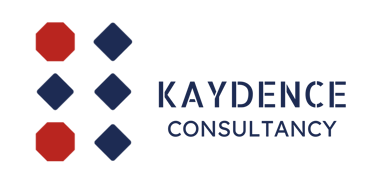Kaydence partners with the CSH to drive innovative solutions in education and healthcare.
Demystifying Financial Aid: Scholarships, Grants, and Student Loans Explained
Navigating the world of financial aid can be overwhelming, with scholarships, grants, and student loans all offering different benefits and responsibilities. In this blog, we break down the key differences between these three options and provide you with expert advice on how to choose the best one for your educational journey. Whether you’re looking to apply for scholarships, secure a grant, or understand the ins and outs of student loans, this guide will help you make an informed decision that aligns with your financial needs and academic goals.
STUDY ABROAD
2/4/20253 min read


Paying for higher education can be one of the biggest challenges students face, and understanding the different financial aid options available is essential to making the best decision for your future. Scholarships, grants, and student loans are the three primary types of financial assistance that students can use to fund their studies. While they all help alleviate the financial burden, they have distinct features, benefits, and responsibilities. In this blog, we’ll break down the differences between scholarships, grants, and student loans to help you choose the best option for your education.
1. Scholarships: Rewarding Excellence and Potential
What are Scholarships?
Scholarships are financial awards given to students based on various criteria such as academic achievement, athletic performance, special talents, or financial need. Unlike loans, scholarships do not need to be repaid, making them one of the most desirable forms of financial aid.
Types of Scholarships
Merit-based Scholarships: Awarded to students who demonstrate excellence in academics, sports, arts, or other areas.
Need-based Scholarships: Given to students who show financial need.
Demographic Scholarships: Targeted towards students from specific backgrounds, such as women, minorities, or those pursuing certain fields of study.
How to Apply for Scholarships
Applications vary depending on the scholarship but typically require academic transcripts, personal statements, reference letters, and sometimes specific projects or essays. It’s crucial to research scholarship opportunities early and apply to as many as possible to increase your chances of receiving financial support.
Pros
No repayment required.
Can be awarded for a variety of achievements.
Enhances your resume and academic profile.
Cons
Highly competitive, especially merit-based awards.
Some scholarships may have stringent eligibility criteria.
2. Grants: Need-based Financial Assistance
What are Grants?
Grants are another form of financial aid, typically awarded based on financial need rather than merit. Unlike loans, grants do not need to be repaid, making them an excellent option for students who may struggle to afford their education. Many grants are offered by the government, universities, or private institutions.
Types of Grants
Federal or State Grants: Offered by government agencies, such as the Pell Grant in the United States.
Institutional Grants: Offered by universities or colleges to support students from low-income backgrounds.
Private Grants: Provided by private organizations, foundations, or businesses.
How to Apply for Grants
To apply for grants, students typically need to fill out financial aid forms such as the Free Application for Federal Student Aid (FAFSA) in the U.S., or equivalent forms in other countries. This form assesses your financial need, and based on the information you provide, you may qualify for grants.
Pros
Does not require repayment.
Generally easier to qualify for than scholarships.
A great way to supplement your educational funding.
Cons
Often limited to students from lower-income households.
The application process can be lengthy and require significant documentation.
3. Student Loans: Borrowing for Education
What are Student Loans?
Unlike scholarships and grants, student loans are borrowed funds that must be repaid with interest. These loans can come from the government or private lenders, and while they can help cover tuition fees and living expenses, they come with the responsibility of repaying the loan after graduation.
Types of Student Loans
Federal Student Loans: Provided by the government, these loans typically have lower interest rates and more favorable repayment terms.
Private Student Loans: Offered by banks or private lenders, these loans can have higher interest rates and less flexible repayment options.
How to Apply for Student Loans
For federal student loans, students can apply by completing the FAFSA form. For private loans, students need to apply directly to a bank or financial institution, which will assess their creditworthiness and financial need.
Pros
Provides access to necessary funds.
Government loans often have lower interest rates and better repayment options.
Flexible repayment terms, especially for federal loans.
Cons
Must be repaid with interest, which can accumulate over time.
Taking out loans increases the financial burden after graduation.
Defaulting on loans can negatively affect your credit score.
Choosing the Best Option for You
When deciding between scholarships, grants, and student loans, it’s essential to consider your individual financial situation, academic goals, and long-term career plans. Here are a few key points to guide your decision-making:
Start with Scholarships and Grants: These options should be your first priority since they do not need to be repaid. Apply for as many scholarships and grants as possible to reduce your need for loans.
Only Consider Loans If Necessary: If scholarships and grants do not cover all your expenses, then consider taking out a student loan. Government loans often offer better terms, so explore those options first.
Be Strategic: Keep track of deadlines and application requirements for scholarships, grants, and loans. Plan ahead and stay organized to avoid missing opportunities.
In conclusion, while scholarships and grants are excellent, non-repayable forms of financial aid, student loans can fill in the gaps if necessary. By understanding the differences between these options and carefully considering your financial situation, you can make an informed decision that will help you succeed in your educational journey without overburdening yourself financially.
Kaydence Consultancy
Global platform for study abroad solutions, marketing strategy and your efficient research partner
Contact
Get in touch
director@kaydenceconsultancy.com
+9188916082
© 2025 Kaydence Consultancy. All rights reserved.
Designed with care | Powered by Innovation
Navigation
Company
Career
Legal
M G Road, Kochi, Kerala, India
